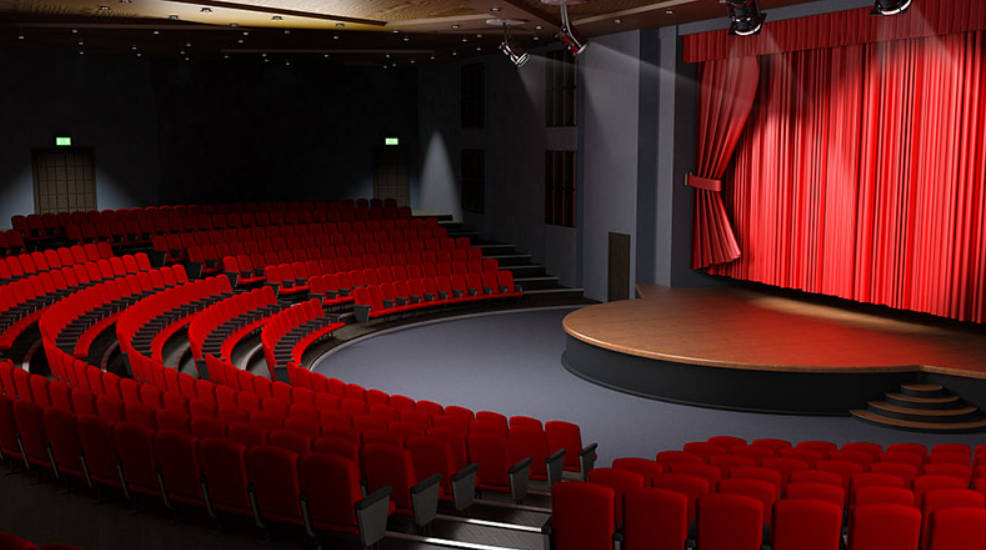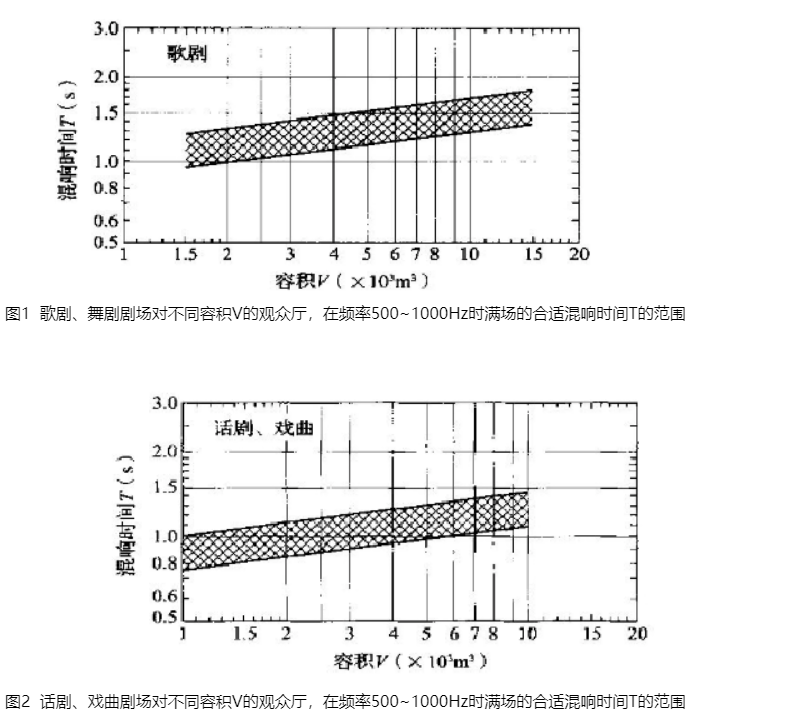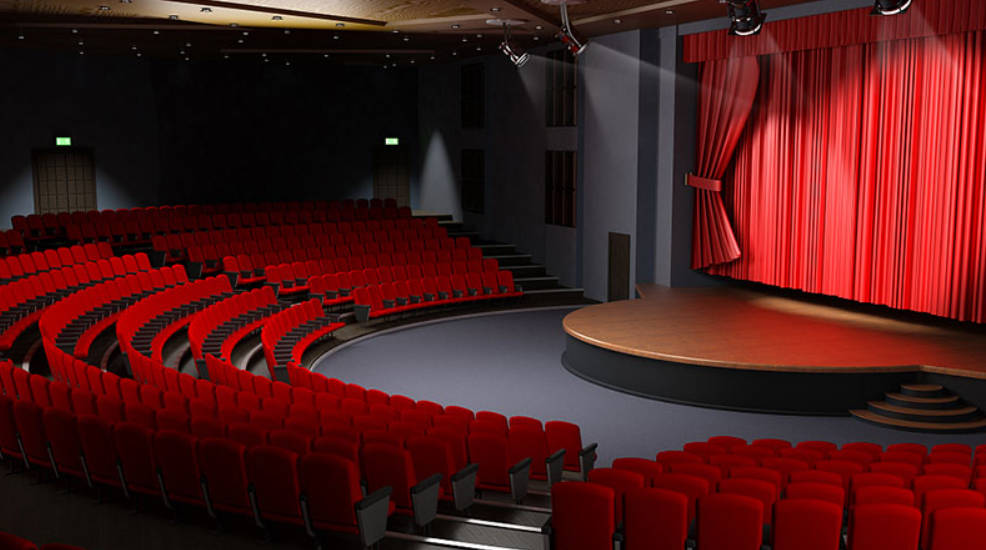notice:
Search:
Code for acoustic design of theater buildings

admin
Acoustic PET Felt Panels Factory | Akupanel & Acoustic Wall Panels Manufacturer - Guangdong Yuefa Acoustic New Materials Co., Ltd

Performing arts buildings include various types of cinemas, theaters, theaters, audio-visual rooms, exhibition rooms, studios, recording rooms, and other multi-purpose hall buildings.
The acoustic design of performing arts architecture involves structure, shape design, sound quality design, and sound insulation. For performing arts buildings with natural sound performances, acoustic design mainly focuses on architectural acoustics, such as concert halls with natural sound performances.
Since the 1980s, several newly designed concert halls have increasingly emphasized the requirements for acoustic environments. Even professional music halls hope to beautifully showcase different styles and types of music.
These cannot be achieved even with high fidelity and high-end sound reinforcement systems. And through architectural acoustic design, it can be turned into reality.
Such examples are everywhere, such as the Boston Concert Hall in the United States (1900), the Sydney Opera House Concert Hall (1973), and the Birmingham Symphony Hall in the United Kingdom (1991).
Many people mistakenly believe that for some performing arts buildings that use sound reinforcement (such as most modern theaters that use sound reinforcement), as long as there is a high fidelity sound reinforcement system, it can meet the performance requirements of the theater.
In fact, the effectiveness of a sound reinforcement system cannot be separated from the construction of sound. Without a good sound design as a prerequisite, even a good sound reinforcement system cannot be fully utilized.
Because the sound reinforcement system cannot eliminate various sound quality defects such as sound staining, sound focusing, multiple echoes, and trembling echoes.
For performing arts architecture, the concept of acoustic design should be introduced in the early stages of architectural design. And it runs through the entire process of architectural and decorative design from beginning to end. Only in this way can high-quality performing arts buildings be built.
1、 Overview of Acoustic Design for Theater Buildings
The function of modern theaters is to integrate the performance of drama, drama, opera, song and dance, folk art, and music.
It is particularly important to meet the requirements of architectural acoustic design while meeting the multifunctional needs of the theater.
The acoustic design of theater architecture involves structure, shape design, sound quality design, and sound insulation.
For natural sound performances, the focus is on performance architecture and architectural acoustic design. Acoustic design should be considered simultaneously from the beginning stage of architectural scheme design.
Acoustic designers should participate in the entire process of civil and decoration design. At each stage of engineering design, it should be synchronized and closely coordinated with relevant design disciplines.

Note: Those primarily focused on sound reinforcement are not subject to this restriction
The volume calculation is bounded by the large curtain line. The stage is equipped with a music cover, which should be included in the volume calculation.
The extended and island stages are not subject to this restriction.
According to the "Code for Acoustic Design of Theater Buildings" JGJ 57-2000, theaters can be divided into four levels: special, A, B, and C.
The volume of each seat in the audience hall should comply with the following regulations:
| 剧场用途 | 每座容积平方/座 |
| 话剧场、戏剧场 | 4.5~7.5 |
| 歌舞剧场 | 4.0~6.0m |
| 剧场类型 | 座位数 |
| 特大型 | 1601座以上 |
| 大型 | 1201~1600座 |
| 中型 | 801~1200座 |
| 小型 | 300~800座 |
Drama and theater should not exceed 1200 seats. Song and dance theaters should not exceed 1800 seats.
2、 Relevant standards and regulations for acoustic design of theater buildings
(1) GB/T 50356-2005 "Code for acoustic design of theaters, cinemas, and multi-purpose halls"
(2) Code for Acoustic Design of Theater Buildings (JGJ 57-2000)
(3) Environmental Quality Standards for Noise (GB 3096-2008)
(4) Design Specification for Hall Sound Reinforcement System (GB 50371-2006)
(5) GBJ76-84 "Measurement Specification for Hall Reverberation Time"
(6) "Building Sound Insulation and Absorption Structures" (National Building Standard Design Atlas 08J931)
(7) Code for Indoor Environmental Pollution Control in Civil Building Engineering (GB50325-2001)
(8) Code for Fire Protection Design of Buildings GBJ16-1987 (2001 Edition)
(9) "Code for Fire Protection Design of Interior Decoration of Buildings" (GB50222-95)
3、 Sound Quality Design in Theater Architecture Acoustic Design
(1) Reverberation time
Specification requirements: GB/T 50356-2005 "Code for acoustic design of theaters, cinemas, and multi-purpose halls"

The ratio of various frequencies in the theater audience hall to 500-1000Hz
| 频率(Hz) | 混响时间比值 | |
| 歌刷 | 话剧、戏剧 | |
| 125 | 1.0-1.3 | 1.0-1.2 |
| 250 | 1.0-1.15 | 1.0-1.1 |
| 2000 | 0.9-1.0 | 0.9-1.0 |
| 4000 | 0.8-1.0 | 0.8-1.0 |
Reverberation time frequency characteristic ratio
| 使用条件 | 125Hz | 250Hz | 200Hz | 4000Hz | 8000Hz |
| 歌舞 | 1.00~1.35 | 1.00~1.35 | 0.90~1.00 | 0.80~1.00 | 0.70~1.00 |
| 话剧 | 1.00~1.20 | 1.00~110 | |||
| 戏曲 | |||||
| 多用途、会议 |
The sound quality of the audience hall should ensure that there is appropriate relative intensity, early stage sound intensity, clarity, and fullness throughout the audience area. During the performance, there shall be no identifiable sound defects such as echoes, multiple echoes, trembling echoes, sound focusing, and resonance in any position within the audience hall, and there shall be no interference caused by equipment noise and external environmental noise in the theater.
(2) Solution
1. The stage space of the extended stage is combined with the audience hall to form the same reverberation space, and the reverberation design is carried out according to the same space.
2. The space inside the stage acoustic reflector belongs to a part of the audience hall space, and the reverberation of the audience hall with stage reflector should be designed separately.
3. The stage and music pool should be designed with acoustics.
4. Canopy
The suspended ceiling near the stage is made of double-layer 12 thick Ette board, or other equivalent acoustic reflective materials. The installation area is m2, and the ceiling shape is a progressive wave shape. The specific specifications and shapes of the ceiling can be found in the CAD drawings. The remaining part of the ceiling is made of perforated sound-absorbing material and glass wool.
5. Wall
MLS diffusers are installed on both sides of the wall near the stage entrance. In order to avoid acoustic defects such as echoes, strip perforated sound-absorbing structures are arranged on all the back walls. Due to the need to control the reverberation time of the entire audience hall, a certain amount of acoustic material is required, and the rear wall area is insufficient. Therefore, a perforated sound-absorbing structure is installed at the rear of the side wall.
Code for Acoustic Design of Theater Buildings (JGJ57-2000)
The capacity of each seat in the audience hall
| 剧场类别 | 容积指标(m3/座) |
| 歌剧 | 4.5~7.0 |
| 戏曲、话剧 | 3.5~5.5 |
| 多用途(不包括电影) | 3.5~5.5 |
Audience reverberation time setting
| 使用条件 | 观众厅混响时间设置 |
| 歌舞 | 1.3~1.6s |
| 话剧 | (2000~10000m3) |
| 戏曲 | |
| 多用途、会议 |
6. Stage
The stage floor adopts double-layer wooden flooring. The stage and the audience hall are connected through the stage entrance, forming a coupling space. In order to avoid the adverse effects of the coupling space on the audience hall and meet the listening requirements of the actors, the reverberation time of the stage is similar to that of the audience hall. Therefore, fabric sound-absorbing panels are installed on the walls facing the audience, and wooden slotted sound-absorbing panels are installed on the walls on both sides of the stage,
7. Ground level
The ground is made of wooden flooring with reflective properties.
8. Seats
In order to reduce the impact of the audience on indoor sound quality, the sound absorption of the seats should meet the following requirements:
Seat Sound Absorption Performance Table
| 倍频程中心频率(Hz) | 125 | 250 | 500 | 1000 | 2000 | 4000 |
| 每座吸声量 | 0.20 | 0.30 | 0.40 | 0.50 | 0.50 | 0.50 |
The surface layer of the seat is made of woven fabric, which has good sound transmission performance. The upper part and both sides of the backrest are made of non perforated reflective surface material, and the lower surface layer of the seat is made of perforated material.
9. Other functional rooms
The ear light room is equipped with full frequency sound-absorbing materials, while the projection room, private room, etc. are arranged with sound-absorbing, reflecting, diffusing and other acoustic materials according to the design standards.
4、 Sound insulation in acoustic design of theater buildings
Solution
1. The walls and roofs of the audience hall should be treated with sound insulation and vibration reduction.
2. The audience hall should use rest halls (corridors), front halls, etc. as one of the sound insulation measures. The entrance of the audience hall should be equipped with sound barriers and soundproof doors.
3. The intermediate frequency (500-1000Hz) sound insulation when the observation window in the sound control room is closed is ≥ 25 dB.
4. Doors leading to the outdoors should use soundproof doors.
5. The intermediate frequency (500-1000Hz) sound insulation of the enclosure structure of the simultaneous interpretation room should be ≥ 45dB. The reverberation time for the voice control room and simultaneous interpretation room should be 0.3-0.5 seconds, and the noise generated by the air conditioning system should not exceed NR-25.
6. The noise during the opening and closing of the stage curtain should not exceed NR-40 in the middle of the first row of the audience. The operating noise of the lifting orchestra and other mechanical equipment should not exceed NR-45 in the middle of the first row of the audience
7. Equipment rooms such as air conditioning rooms, fan rooms, cooling towers, refrigeration rooms, and boiler rooms should be kept away from the audience hall and stage. When connected to the main building. Good noise reduction and vibration isolation measures should be taken.
8. Ventilation or air conditioning systems should adopt noise reduction measures, and the noise transmitted to the audience and stage through the air outlet should be 5 dB lower than the indoor allowable noise standard.
9. When the ventilation, air conditioning, and refrigeration rooms are adjacent to the audience hall and stage, sound insulation measures should be taken, and their sound insulation capacity should be such that the noise transmitted to the audience hall and stage is 5 dB lower than the allowable noise standard. Vibration reduction measures should be taken for power equipment.
5、 Material requirements for acoustic design of theater buildings
(1) The ceiling, walls, and floor decoration materials of the audience hall (including the music pool) should not be lower than A1 level. When B1 level decoration materials are used, corresponding fire protection facilities should be installed.
(2) The keel materials used for ceiling and wall decoration should all be A-grade materials.

Hot products
-
Private Soundproof Pod Booth For Office
Flexible and movable soundproof booth.the interior is equipped with polyester fiber sound-absorbing panels. It has the advantages of fire prevention, safety and stability.
-
Wholesale Anti-Vibration Pads
Source high-quality wholesale anti-vibration pads for machinery, construction, and OEM projects. Get competitive bulk pricing, global shipping, and custom solutions from trusted suppliers.
-
Sound Insulation Wood Wool Acoustic Panel
Wood fiber acoustic board is a decoration and sound insulation material, using pure wood wool as raw material which is characterized by available for a variety of colors and patterns to choose from, the finishes color can be adjusted according to the requirements of the acoustic renovation or investors; wool wood acoustic panel sound absorption spectrum is high, which have fairly good results for low, medium and high frequency noises, and good fire-proof, no dust pollution, strong decorative and simple to use. There are many specification levels available for investors to choose, you can simply note when ordering.
-
Wall And Ceiling Acoustic Perforated Wood Panels
Premium grade perforated wood acoustic panels for wall and ceiling applications. Achieve 0.90 NRC with Class A fire-rated natural wood panels. Custom patterns & finishes for architectural acoustics.
-
24mm PET Acoustic Panels Polyester Fiber Sound Absorbing Material
Our 24mm PET Acoustic Panel answers your acoustical and aesthetic needs with its strong sound-absorbing performance, durability, and elegant appearance. These panels are used for sound reduction and reverberation control. Available in a wide variety of sizes, thicknesses, fabric styles, and colors. 24mm PET Acoustic Panels allow you to create an effective sound control treatment that is distinctly appropriate for your environment.
-
Micro Perforated Wood Acoustic Panel
The materials of Micro Perforated Wood Acoustic Panels are made of MDF with microperforations on the visible side and big holes in the back side.
-
Waterproof PVC Sound Barriers
Our sound insulation products help protect and reduce the impact of industrial noise on surrounding residents and on-site workers.We use the world's leading acoustic technology and innovative material design to provide the most effective temporary sound solutions on the market.The one of most important thing is that soundproof products can work under various conditions on any construction site.
-
Modern Office Meeting Pods - 2 Steel Walls + 2 Glass Walls - Custom Sizes Available
China factory-direct manufacturer of premium soundproof meeting pods featuring 2 metal walls + 2 glass walls. Our ISO-certified office pods deliver 38dB noise reduction with quick-ship modular designs. Custom sizes/colors available with 5-year warranty. Ideal for offices, coworking spaces & universities. Competitive pricing with bulk order discounts. Request CAD files & quotes today!
-
300x300mm Hexagon Wall Panels - Soundproof Polyester Fiber Acoustic Panels for Easy Installation
Upgrade your space with our 300x300mm hexagon acoustic panels. Made from high-density polyester fiber, these soundproof wall panels effectively reduce noise and echo. Quick installation, stylish design, and premium sound absorption for offices, studios, and homes.
-
20mm polyster fiber panel directly supplied by Chinese manufacturers
PET Acoustic Panel is made from 100% polyester,by needle punching processing. The production processis completely physical&eco-friendly, no waste water,emissions, waste. no adhesive, The porous nature ofacoustic panel makes it sound absorptive&thermalinsulative.
-
Smoked oak sound-absorbing board, black felt
As a leading Chinese acoustic panel manufacturer, our factory specializes in producing Akupanel wooden slat acoustic panels that combine aesthetic appeal with superior noise reduction performance. These wood wall acoustic panels are ISO 9001 certified, featuring Class A fire ratings and NRC 0.85 sound absorption coefficients.
-
Premium Decorative Natural Grooved Akupanel Wooden Acoustic Panels – Direct from China Manufacturer
As a leading China-based acoustic panel factory, we specialize in crafting high-quality Decorative Natural Grooved Akupanel Wooden Acoustic Wall Panels that combine aesthetic appeal with superior sound absorption. Our products are engineered for architects, interior designers, and contractors seeking eco-friendly acoustic solutions with customizable designs.
-
Standard 9 mm PET Felt panels
Discover customizable acoustic wall panels made from 100% recycled PET polyester fiber. Achieve NRC 0.85+ sound absorption with eco-safe (12 bottles recycled/panel), fire-resistant (Class A/B1) solutions. Perfect for studios, offices & modern interiors. Custom sizes/colors available. LEED & GREENGUARD Gold certified.
-
Perforated Wood Acoustic Panel
Product introduction: Acoustic Wood panels is a sound-absorbing material of MDF material with many holes. It is widely used in theater, restaurant, household and other places which need to reduce noise. DIY Perforated Acoustic Panel Precautions: l Wood or melamine veneer with different colors is natural phenomenon. l Pay attention to moisture before installation. Please keep them in a dry environment.
-
Wooden Grooved Wall Panels
China's Leading Wooden Grooved Wall Panels Manufacturer - Get premium quality acoustic wood slat panels at factory-direct prices. Our FSC-certified grooved wall panels feature custom CNC designs (5-20mm depth), excellent sound absorption (NRC 0.6-0.9), and 12+ finish options. Ideal for commercial spaces, residential interiors, and acoustic treatment. ISO 9001 certified with 15+ years experience. MOQ 100㎡ with free samples available. OEM/ODM services supported. Contact us today for wholesale pricing from China's trusted wood wall panel supplier!
-
Polyester Acoustic Panel (standard)
High-performance polyester fiber acoustic panels for noise control and sound absorption. Eco-friendly soundproofing solution for commercial and residential spaces with Class A fire rating.
Cases
-
Acoustic Decoration Project of Guangzhou Metro Museum
Acoustic Decoration Project of Guangzhou Metro Museum
-
Nanhai Middle School Lecture Hall
The original acoustic design of the auditorium at Nanhai Middle School can no longer meet the needs of modern teaching and activities, especially in large-scale lectures, conferences, and cultural events. The uniformity of the sound field and the clarity of speech directly affect the efficiency of information transmission and learning outcomes. Therefore, carrying out scientific and reasonable acoustic decoration is the top priority of current work.
-
Acoustic Decoration Project for Lecture Hall - Nanhai Middle School Renovation and Expansion Project
The original acoustic design of the auditorium at Nanhai Middle School can no longer meet the needs of modern teaching and activities, especially in large-scale lectures, conferences, and cultural events. The uniformity of the sound field and the clarity of speech directly affect the efficiency of information transmission and learning outcomes. Therefore, carrying out scientific and reasonable acoustic decoration is the top priority of current work.
-
Songshan Lake Taiwan Garden North School - Classroom Acoustic Decoration Project
In the current educational environment, the acoustic design and decoration of classrooms are receiving increasing attention. A good acoustic environment can not only improve students' learning efficiency, but also provide teachers with a better teaching space. As a modern educational institution, Songshan Lake Taiwan Garden North School has realized this and therefore carried out classroom acoustic decoration projects in order to create an ideal learning and teaching environment for teachers and students.
-
Shenzhen Longhua Experimental School Concert Hall
Shenzhen Longhua Experimental School Concert Hall
-
Acoustic architectural decoration of the multifunctional hall at Xinyu Ninth Middle School
Yuefa Acoustics provides professional multifunctional hall acoustic decoration design solutions, including architectural acoustics, sound reinforcement, and noise control design, with the aim of ensuring language clarity in the audience seats.
-
Acoustic Renovation Case of Lecture Hall (Dongguan Songshan Lake School Junior High School Project) - Yuefa Acoustics
The lecture hall is not only used for hosting large-scale conferences, cultural performances, and social events, but also often serves multiple functions such as education and training, exhibitions, etc. The goal of acoustic renovation is to optimize the sound field distribution, reduce noise interference, and improve audio clarity, so that the auditorium can better adapt to various needs.
Online Service



